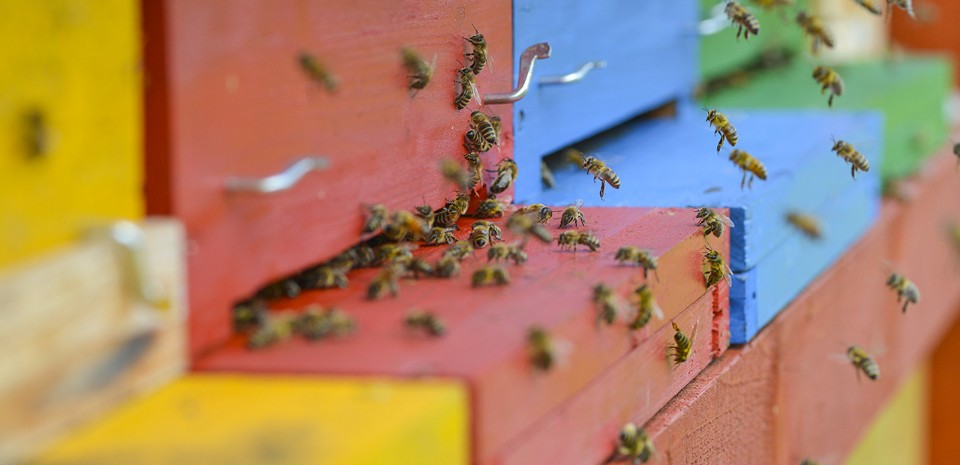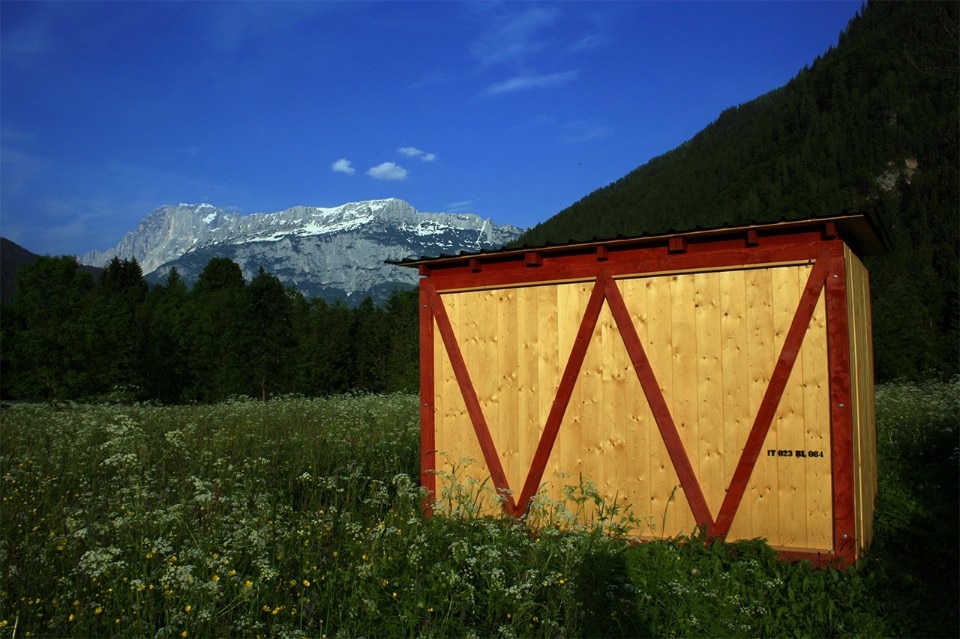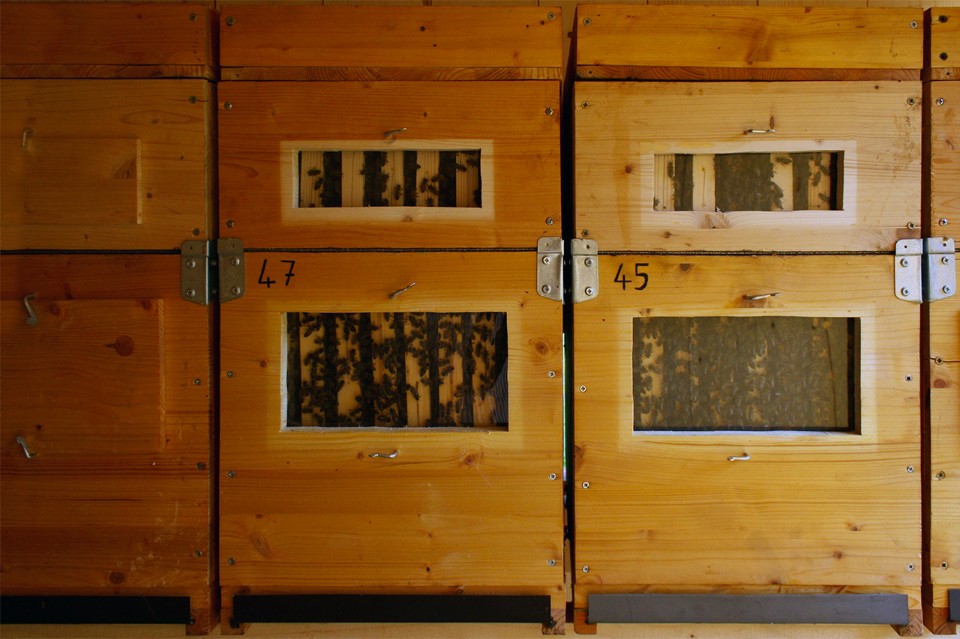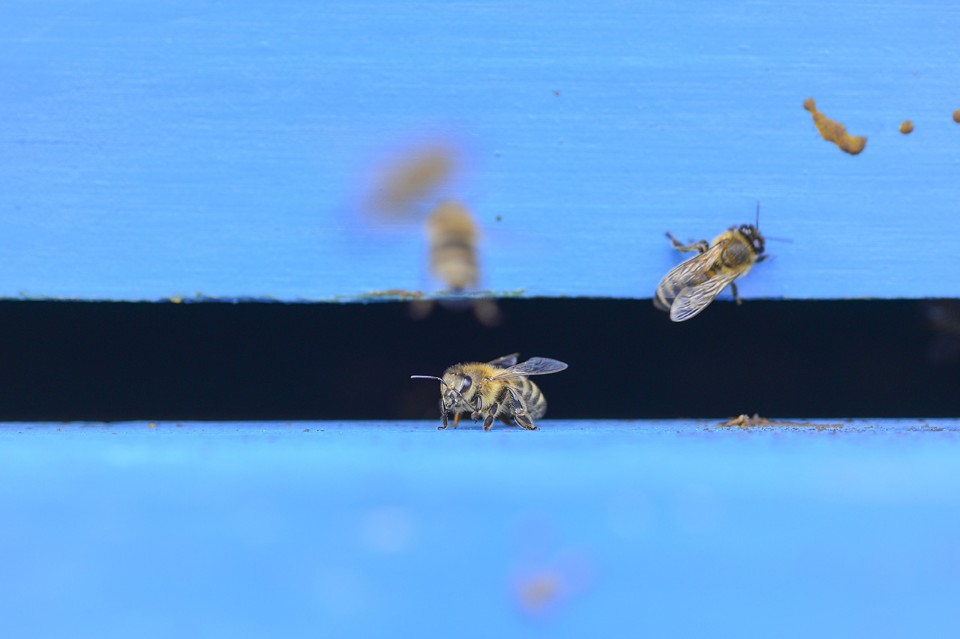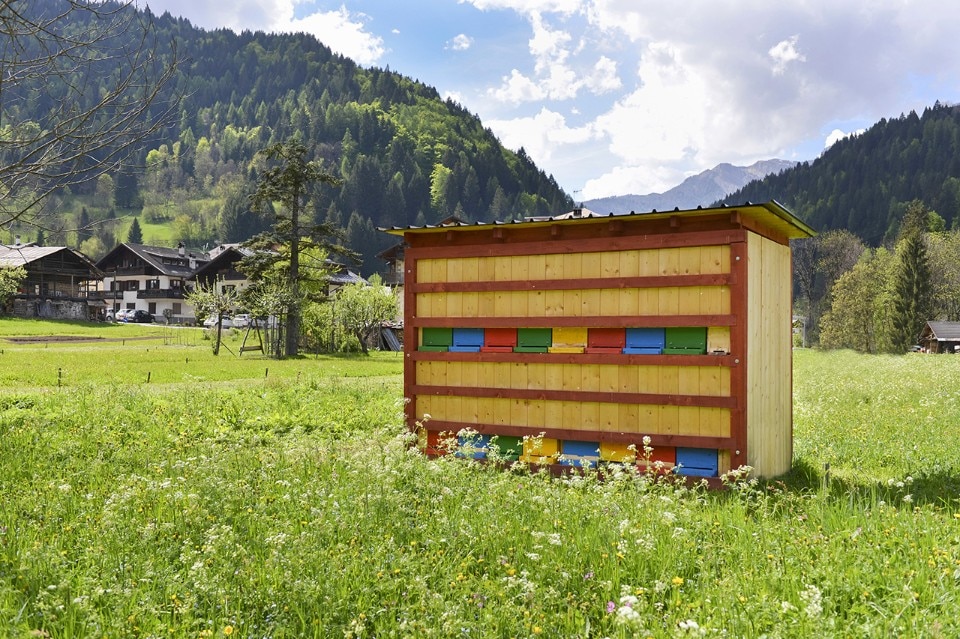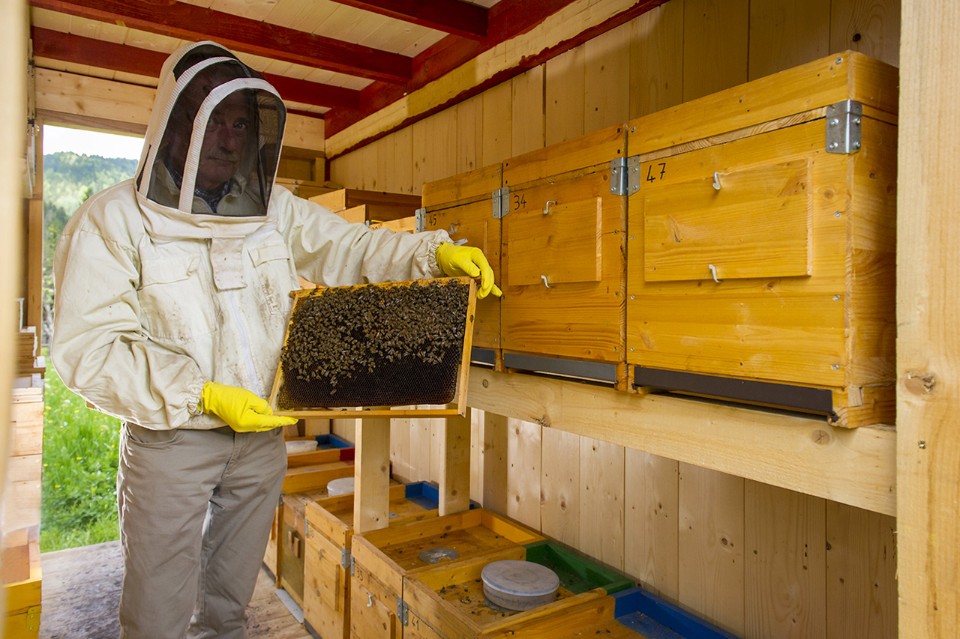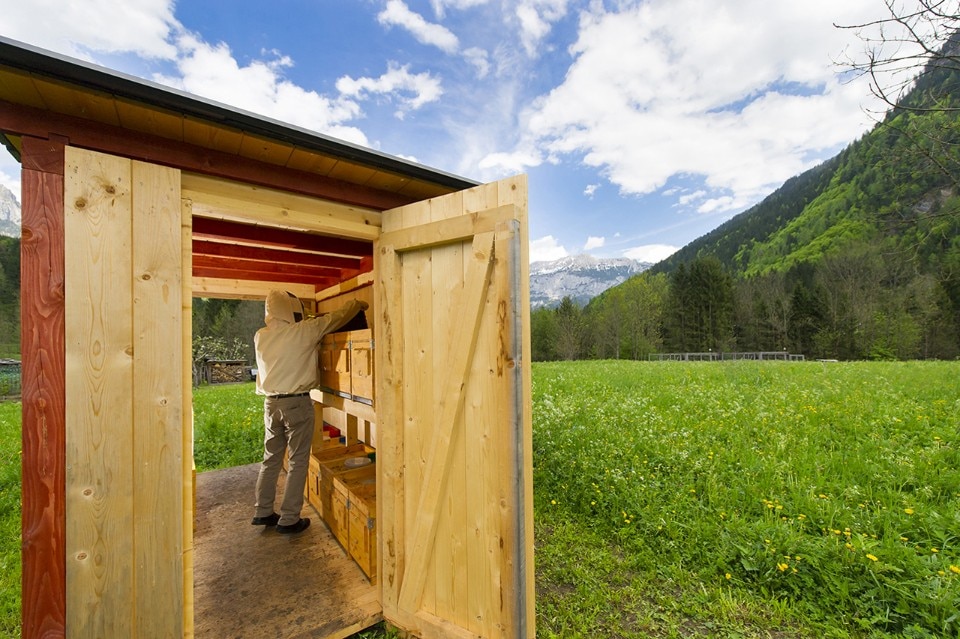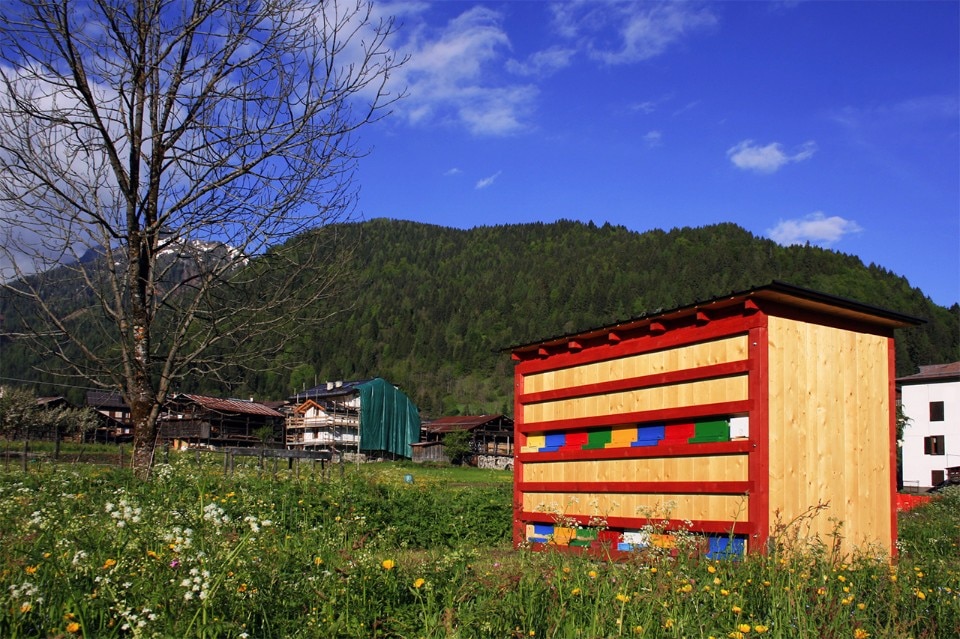
The frame system that characterizes traditional rural buildings of the Alpine valleys is reinterpreted here in a contemporary way.
The need for a structural bracing structure and of supporting the hives generated the aesthetic motif of the two main facades. The concept of structure / skeleton and infill / skin of the building is revealed by the two colors of the facades: the red color characterizes the structural elements, whilst the natural wood is for the wallboard.
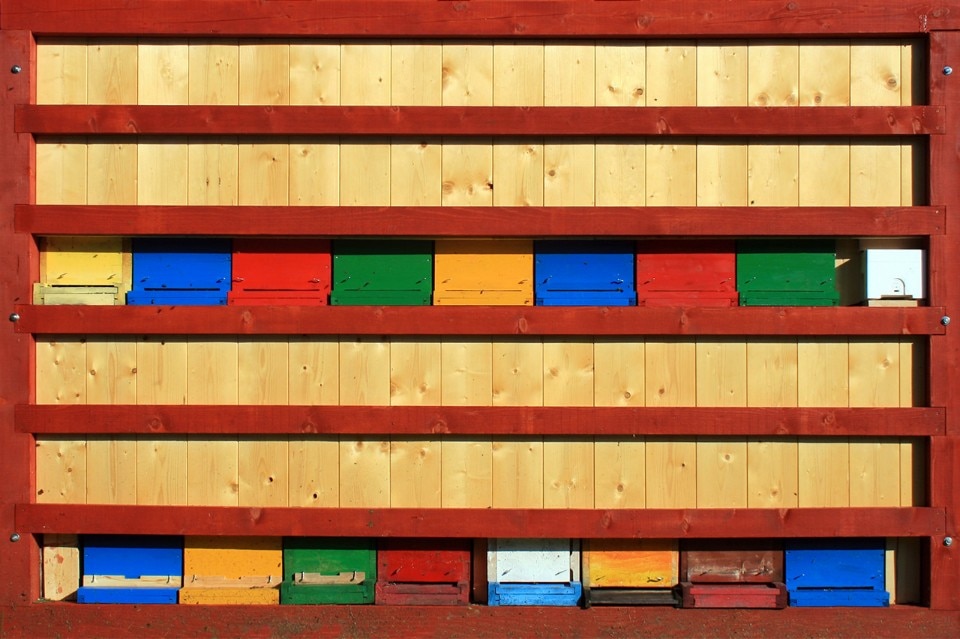
The Bienenhaus’ internal volume consists of three distinct functional domains, found in three ideals bands parallel: along the south facade of the hives are placed on two different levels, along the north facade are stored the supers and beekeeping equipment, and finally the middle is the work of the beekeeper during his visits to the apiary.
Two doors symmetrically arranged along the lower elevations and masked inside the hanging wooden give access to the workspace. Coverage, slightly inclined to the north, is lightweight and highly dematerialized by the detachment wanted than the sheer volume of the building and by the shadow of overhang.
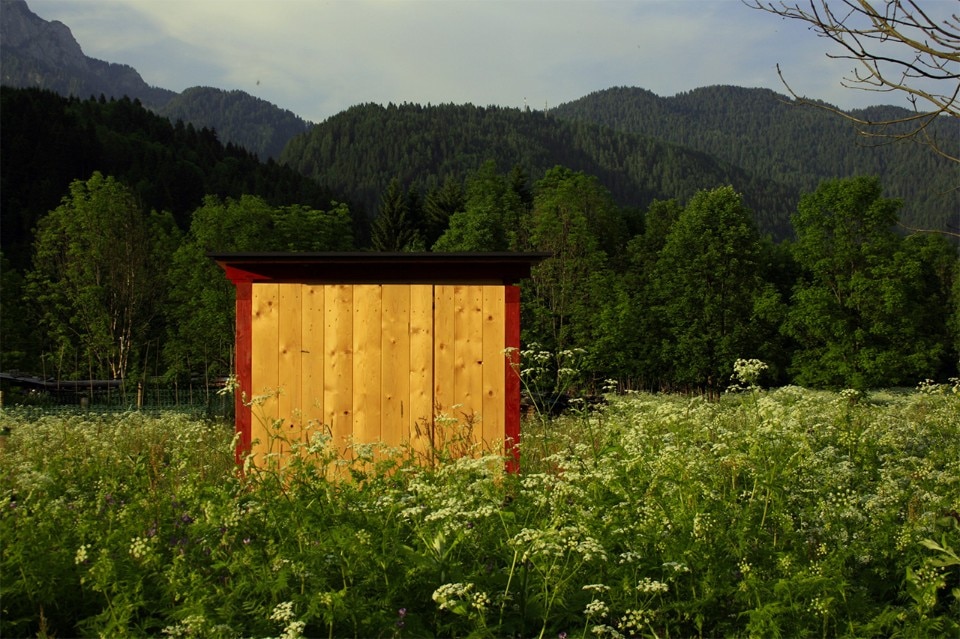
The small building has been designed following the principle of disassembly: in fact, the components are linked together to dry by means of joints, screws and bolts. The building consists of eight main parts connected together, which have been designed to have weight and dimensions such as to be easily transported and installed by two people.
The project led to the choice of natural materials and or recycled: local fir wood for the frame, corrugated aluminium for the roofing, and water-based paints. The attack on the ground is totally reversible thanks to foundations that consist simply of nine concrete bricks laid slightly recessed into the ground.
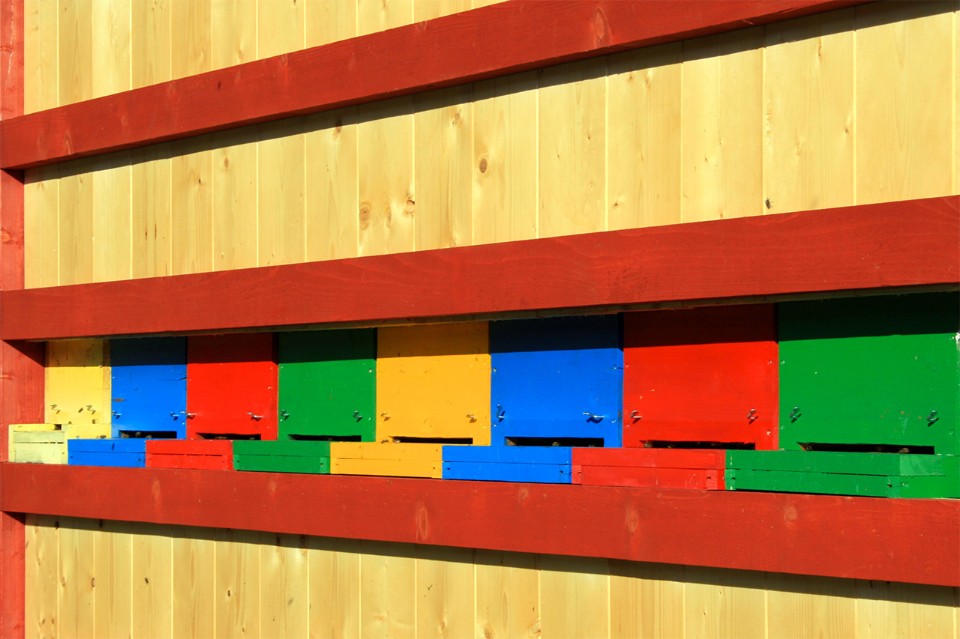
Bienehaus, Canale d’Agordo, Belluno, Italy
Program: apiary
Architect: Massimiliano dell’Olivo
Area: 6.5 sqm
Completion: 2014


